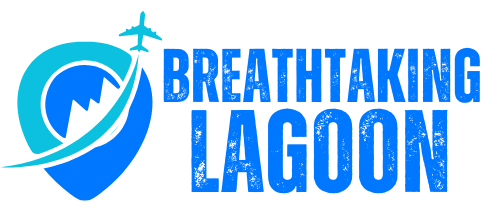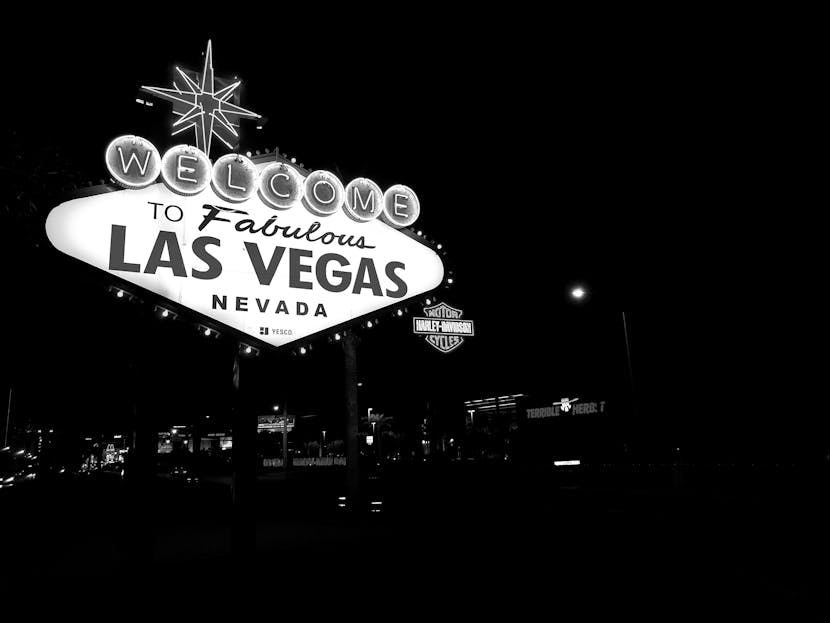Published on October 12, 2025
By: Tuhin Sarkar
Las Vegas, along with Los Angeles, San Francisco, and New York City, is experiencing a significant freefall in its tourism industry, as recent reports reveal low hotel occupancy rates and a sharp drop in the travel and hospitality job market.
This trend has impacted some of the biggest cities in the U.S., all of which rely heavily on tourism and hospitality to fuel their economies. Las Vegas, known for its vibrant tourist attractions and hospitality sector, is facing challenges similar to those of other major cities, where hotel occupancy is falling and job opportunities in travel and hospitality are shrinking.
Advertisement
Advertisement
As the tourism industry freefalls in these cities, it’s becoming increasingly clear that the situation demands immediate attention. With fewer tourists and a declining workforce, these cities face the difficult task of addressing the decline in the tourism industry and revitalising their economies. This shift is affecting both businesses and workers across the sector.
The job market in Las Vegas, Nevada’s economic engine, is facing a period of stagnation, as tourism on the famous Strip continues to decline. Despite the state’s unemployment rate dropping slightly from 5.4% to 5.3%, the situation reflects fewer people working or even looking for work. The shrinking labour force in Nevada, combined with fewer visitors and a dip in tourism, has left local businesses struggling to maintain profitability. As the tourism sector weakens, jobs in key industries like hospitality and food services are also being impacted, leaving many workers, particularly in service positions, without consistent shifts.
Advertisement
Las Vegas: Tourism Decline Hits Hard
Advertisement
Las Vegas is known for its vibrant tourism industry, attracting millions of visitors each year. However, in 2025, the city is experiencing a sharp decline in tourism. Visitor numbers are down by 12% compared to last year, which is a significant decrease. Several factors are contributing to this decline.
One major reason is the reduction in international travel. Due to economic uncertainties and stricter immigration policies, fewer international tourists are visiting Las Vegas. The city has also become more expensive to visit, with increased hotel prices and higher costs for entertainment and dining.
Advertisement
Advertisement
As a result, hotel occupancy in Las Vegas has dropped to 66.7%. This is a 17% decrease from the previous year. Revenue per available room (RevPAR), a key metric for the hotel industry, has also fallen by 29%. Many hotels are struggling to fill rooms, leading to a decrease in overall profitability.
The drop in tourism has also affected jobs in the hospitality industry. Many workers in hotels, casinos, and restaurants have reported reduced hours or layoffs. For example, a busser at Caesars Palace shared that he had received fewer shifts this year and found it difficult to find work elsewhere. These job losses are further compounded by the fact that many service workers depend on tips, which are also declining due to fewer tourists visiting the Strip.
San Francisco: Declining Occupancy and Job Losses
San Francisco is also experiencing significant economic challenges in 2025. The city’s hotel industry has seen a sharp decline in occupancy rates. Hotel occupancy in San Francisco has dropped by 22% compared to 2019, a worrying trend for a city that heavily relies on tourism. Some major properties have lost approximately $1 billion in value.
Despite some optimism in the form of a projected 6% increase in revenue per available room (RevPAR) for 2025, the broader hotel industry in San Francisco is struggling. Hotels are not filling enough rooms to maintain profitability, and many are having to reduce their workforce to keep costs down. The slow recovery in hotel performance highlights the ongoing difficulties in the city’s tourism sector.
In addition to the decline in tourism, San Francisco is also facing a major shift in its job market. The city has seen a slowdown in high-tech job growth, which was once a key driver of its economy. This slowdown has contributed to San Francisco’s drop in the national rankings of best-performing cities. The city now ranks 71st, reflecting the challenges it faces in diversifying its economy beyond technology and tourism.
Moreover, the conversion of several hotels into migrant shelters has reduced the number of available hotel rooms in the city, further contributing to the decline in tourism and hotel occupancy. The rising cost of accommodation has made it more difficult for tourists to afford a stay in the city, leading to a decrease in visitor numbers.
New York City: Tourism Struggles and Rising Costs
New York City, another major U.S. tourism hub, is also facing declines in both tourism and hotel occupancy. Hotel occupancy in the city has dropped by 1.4%, reaching 86%. While this is still relatively high, it marks a small decline compared to previous years. The city’s hotel industry is struggling to attract as many visitors as it did pre-pandemic.
International tourism has also been a key contributor to this decline. Visitors from overseas are now choosing alternative destinations, and stricter visa policies have made it more difficult for international tourists to visit the U.S. This has had a significant impact on New York City’s tourism numbers.
In addition to the decline in tourism, New York City has faced challenges related to the accommodation sector. The conversion of 121 hotels into migrant shelters has reduced the number of available hotel rooms. This, combined with the rising cost of accommodation, has made it more expensive for tourists to visit the city. The increased costs have led to fewer people visiting and staying in New York City, further impacting the economy.
Broader Trends in U.S. Cities: A National Decline
The issues facing Las Vegas, San Francisco, and New York are not isolated. Across the United States, many other cities are experiencing similar trends. Nationally, hotel occupancy rates are projected to reach only 63.38% in 2025, slightly below the pre-pandemic rate of 65.8%. This represents a modest recovery from the lows of 2020, but it still reflects a slow and uncertain recovery in the hotel sector.
Tourism numbers are also expected to decline across the country. The U.S. is projected to see an 8.2% drop in international visitors in 2025, with international spending falling by 4.1%. These declines are largely attributed to global economic factors, such as rising inflation, stricter visa policies, and increased competition from other countries.
Many cities that rely heavily on tourism are feeling the effects of these declines. Las Vegas, San Francisco, and New York are just a few examples of cities that are facing difficult economic conditions due to reduced tourism and hotel performance.
The Impact on Jobs in the Tourism Sector
The decline in tourism and hotel performance has had a significant impact on jobs in the tourism and hospitality sectors. Many workers in hotels, restaurants, and casinos are experiencing reduced hours or job losses. For example, in Las Vegas, service workers have reported a sharp drop in tips, as fewer tourists are visiting the Strip.
Across the country, the hospitality industry has seen a significant reduction in job openings. In June 2025, the hospitality sector lost 308,000 jobs, marking the largest decline of any industry in the U.S. This has led to increased unemployment in cities like Las Vegas and San Francisco, where tourism and hospitality are key parts of the economy.
The slowdown in high-tech job growth in cities like San Francisco has also contributed to a decline in overall job growth. In many cities, job markets are stagnating, and workers are finding it difficult to find stable employment. This is further exacerbating the economic difficulties faced by these urban centres.
Strategies for Economic Recovery
To address the ongoing challenges, cities must adopt strategic measures to revive their tourism sectors, improve hotel performance, and stimulate job growth. One key strategy is to diversify local economies. By reducing reliance on tourism and hospitality, cities can better withstand downturns in these sectors.
Cities like New York and San Francisco are already taking steps to improve their tourism offerings. In San Francisco, there are efforts to revitalise downtown areas and improve public transportation. In New York City, there is a focus on cultural and recreational projects to attract more visitors.
Additionally, cities should invest in infrastructure projects and expand into other industries, such as technology, green energy, and advanced manufacturing. These sectors can provide more stable job opportunities and help reduce reliance on the fluctuating tourism and hospitality industries.
For workers in the tourism sector, retraining programs and job transition services can help them move into new fields. Expanding access to affordable housing and healthcare will also help support workers and reduce the economic strain on local communities.
Nevada’s Labour Market Faces Stagnation Amid Tourism Struggles
Nevada’s job market in August 2025 remained largely stagnant. According to the Nevada Department of Employment, Training, and Rehabilitation (DETR), the state’s unemployment rate dropped slightly from 5.4% to 5.3%. However, this dip is not necessarily a positive sign for the economy. The decrease reflects a shrinking workforce rather than an increase in job opportunities. Around 1,300 people left the workforce, and total employment remained stagnant at approximately 1.57 million jobs, with a slight reduction from the previous month. As tourism and other key industries like construction and accommodation services falter, the economy faces a challenging outlook.
Private Sector Employment Drops Significantly in August
The August 2025 report highlighted concerning trends within Nevada’s private sector. Private sector employment fell by 6,000 jobs, a decline driven primarily by decreases in the construction and accommodation and food services industries. These sectors, integral to the Las Vegas economy, saw significant reductions in workforce demand. While unemployment claims did not surge, the job losses reflect a broader slowdown in activity, particularly in industries that rely heavily on the influx of visitors. Despite steady hourly wages and work hours, this trend suggests a slowing of the local economy and increasing challenges for jobseekers.
Tourism Decline Continues to Impact Local Economy
Tourism, a key driver of Las Vegas’ economy, has shown significant signs of strain in recent months. According to the Las Vegas Convention and Visitors Authority, visitor volume in southern Nevada dropped by 11.3% in June 2025 compared to the same month the previous year. This decline, coupled with a 10.7% drop in convention attendance, underscores the weakening demand for both leisure and business travel. Additionally, hotel performance metrics revealed a worrying decline in occupancy rates, which fell by 6.5% to 78.7%. As a result, revenue per available room also plunged nearly 14%, signalling that resorts and hotels are struggling to maintain profitability in a challenging market.
Las Vegas Hotels See Decreased Profitability Despite Modest Gaming Growth
While hotel performance has been poor, there is a silver lining in the city’s gaming revenue. Clark County, which includes Las Vegas, saw a modest increase in gaming revenue, which rose by 3.5%. This suggests that while fewer visitors are arriving, those who do are spending more during their stay. However, the drop in hotel performance signals a greater issue for the city’s hospitality industry. With lower occupancy rates and diminished profits, many resorts and hotels are facing economic pressures. The sluggish tourism flow has hit service workers particularly hard, as many rely on tips to supplement their wages.
Service Industry Workers Struggle with Reduced Shifts and Earnings
The ongoing decline in tourism has had a direct impact on the livelihoods of service workers, particularly those in jobs dependent on tips. Service workers like busser Sebastian Espinoza, who works at Caesars Palace, have reported a sharp decline in shifts and earnings. Despite having over a decade of experience, Espinoza and others like him have found it increasingly difficult to secure work, as fewer visitors frequent the Strip. As service workers continue to face reduced hours and tips, the tourism slowdown in Las Vegas becomes more than just an economic issue – it’s a personal struggle for many in the city’s workforce.
Economic Outlook for Las Vegas: Challenges Ahead
As Las Vegas faces a prolonged slump in tourism, its economic outlook remains uncertain. While some industries, such as gaming, have seen modest growth, the wider tourism sector, which drives a significant portion of the economy, continues to struggle. The drop in visitor volume, coupled with declining hotel occupancy and profitability, indicates that Las Vegas may not see a significant rebound in the short term. With unemployment figures reflecting a shrinking labour force rather than a robust job market, the city’s economy is facing a tough road ahead.
Future Prospects: Can Las Vegas Recover from Tourism Decline?
While the situation in Las Vegas remains challenging, there are hopes for a recovery in the future. As the city works to diversify its economy beyond tourism, there may be potential for growth in other sectors. However, the tourism sector remains integral to the city’s identity and economy. For a full recovery, the city will need to see an uptick in visitor numbers, particularly from international markets, and a revitalisation of conventions and leisure travel. In the meantime, the local workforce will continue to face uncertainty as Las Vegas navigates the consequences of a prolonged tourism slump.
A Difficult Road Ahead for Las Vegas’ Economy
Las Vegas is currently facing a period of economic stagnation, with a weakened tourism sector contributing to a rise in unemployment and a decline in service industry jobs. As visitor numbers drop and hotel performance falters, the city’s economy continues to struggle, leaving many workers without the steady shifts they once relied on. While modest growth in gaming revenue offers some hope, the broader economic picture remains bleak. Las Vegas will need to adapt and find new ways to stimulate its economy if it hopes to overcome the challenges presented by a declining tourism sector and return to growth in the coming years.
In 2025, several U.S. cities are grappling with significant economic challenges, with declines in tourism, hotel performance, and job markets. This downturn is affecting cities like Las Vegas, San Francisco, and others that are heavily reliant on tourism and the hospitality industry. The decline in these sectors has had a ripple effect, impacting local economies, businesses, and workers. This article delves into the specific factors driving these declines and explores the broader implications for urban economies across the United States.
Decline in Tourism Across U.S. Cities
Tourism is a vital part of many U.S. cities’ economies, especially those known for their vibrant cultural scenes and historical significance. However, in 2025, tourism numbers have dropped sharply in cities such as Las Vegas and San Francisco. Las Vegas, traditionally one of the top destinations in the U.S., has seen a 11% decline in visitors in 2025 compared to previous years. This decrease in foot traffic is due to a combination of factors, including global economic uncertainty, stricter visa policies, and increased competition from other destinations. The drop in international travellers, particularly from Canada and Europe, has been particularly impactful. The city has also experienced a 13% drop in international visitors in 2025, highlighting a shift in travel patterns.
Similarly, San Francisco has been hit hard by a downturn in tourism. The San Francisco Centre mall, a popular retail and tourism hub, now has a 93% vacancy rate. This is an alarming sign of the changing dynamics in retail and tourism, as fewer people are visiting the city’s attractions. The city’s tourist numbers have significantly decreased, partly because of post-pandemic changes in travel habits. People are now prioritising outdoor and less crowded destinations, leaving once-popular cities struggling to maintain their position on tourists’ itineraries.
Nationally, the U.S. is projected to witness an 8.2% decline in international visits in 2025, with international spending expected to drop by 4.1%. These declines can be attributed to several global factors, including ongoing geopolitical tensions, high inflation, and stricter entry requirements in many U.S. cities. As a result, major cities such as New York, Los Angeles, and Miami are all expected to see fewer visitors in 2025, leading to a direct hit to their local economies.
Hotel Industry Facing Significant Decline
The hotel industry, closely linked to tourism, is also feeling the effects of these declines. Many cities across the U.S. are seeing reduced hotel occupancy rates, lower revenue per available room (RevPAR), and an overall decline in profitability for hotels. In cities like San Francisco, hotel occupancy rates have dropped by 22% compared to pre-pandemic levels in 2019. The decline in both weekday and weekend occupancy is largely due to the dip in tourism. Hotel room demand is falling, and as a result, some major hotels have lost close to $1 billion in value.
Nationally, hotel occupancy rates are expected to remain at about 63.38% in 2025, which is still slightly below the pre-pandemic level of 65.80%. This shows that although there has been some recovery from the depths of the pandemic, the hotel sector is far from thriving. Some regions have seen a small recovery in hotel bookings, but it is clear that the hotel industry is still struggling to fully recover. Moreover, as more people turn to short-term rentals like Airbnb and Vrbo, traditional hotels are facing increased competition.
Hotel performance metrics have also shown a drop in RevPAR across major U.S. cities. For example, in August 2025, RevPAR declined by 1.0%, indicating that even though hotels are filling up more rooms, they are not able to charge the same premium rates they once did. Some cities are seeing a significant rise in short-term rental occupancy, which has made it even harder for traditional hotels to keep up.
Job Market Declines and Sectoral Challenges
As tourism and hotel performance decline, the job market in many U.S. cities is also facing serious challenges. The national unemployment rate in the U.S. slightly decreased from 5.4% to 5.3% in August 2025, but this decrease is misleading. It reflects a shrinking labour force rather than an increase in job opportunities. According to the Nevada Department of Employment, Training and Rehabilitation (DETR), there has been a decline of around 1,300 people in Nevada’s labour force. The total employment rate has remained unchanged, with approximately 1.57 million jobs still in place, but this is down by about 3,800 jobs from the previous month.
Private sector employment also fell by 6,000 jobs over the month, with the biggest losses being in the construction and accommodation sectors. The decline in accommodation and food service jobs is particularly concerning for cities like Las Vegas and San Francisco, which rely heavily on these industries. Despite these job losses, unemployment claims have not spiked dramatically, and wages and hours worked have remained steady, suggesting that demand for workers still exists in some sectors. However, the overall picture is one of stagnation in the job market, with fewer opportunities for new workers to enter the workforce.
In cities like San Diego, job growth has slowed, especially in tech sectors, which had been a major driver of economic success in the region. This decline has led to San Diego dropping to 71st place in the national rankings for the best-performing cities. The job market slowdown is a sign that many cities are struggling to diversify their economies and are overly reliant on industries that are now facing a downturn.
Additionally, the hospitality industry, which employs millions across the U.S., has seen a significant decline in job openings. According to recent reports, the hospitality sector lost 308,000 jobs in June 2025 alone, with a 4.4% decrease in job openings. This is the largest loss of any industry in the U.S., and it highlights the ongoing struggles of the service and tourism sectors. In major tourist cities, the slow recovery of these industries means that many workers in these sectors are either underemployed or facing job insecurity.
The Impact of Declining Tourism and Jobs on Local Economies
The decline in tourism, hotel performance, and job markets is having a cascading effect on local economies in U.S. cities. Many cities rely heavily on tourism and hospitality jobs to sustain their economies. As tourism numbers drop, hotel occupancy rates fall, and job markets stagnate, local businesses are struggling to keep their doors open.
In cities like Las Vegas, where tourism is a key industry, the downturn is particularly painful. Although gaming revenue in Las Vegas has seen slight growth, this has not been enough to offset the broader economic challenges. Many businesses in the hospitality industry are laying off workers or reducing hours, and many service workers are facing decreased earnings due to lower tips and reduced foot traffic. This economic strain is not only affecting hotel and restaurant workers but also those in ancillary industries such as retail, entertainment, and transportation.
For cities like San Francisco, which depend on a mix of tech and tourism, the decline in tourism is compounded by slowdowns in other industries. As tourism dips, local businesses are seeing reduced sales, and the job market is not growing fast enough to make up for these losses. With fewer people visiting and spending money, many businesses are finding it difficult to stay afloat.
What Cities Can Do to Reverse the Trend
To recover from these economic challenges, cities need to adopt strategic measures to revive their tourism sectors, stimulate job growth, and support the hospitality industry. One key strategy is to focus on diversifying the economy. Cities should look beyond tourism and hospitality and invest in new sectors such as technology, green energy, and advanced manufacturing. By broadening their economic base, cities can reduce their reliance on tourism and mitigate the effects of downturns in that sector.
Another important step is to improve infrastructure and make cities more attractive to visitors. Cities like Las Vegas and San Francisco should invest in enhancing their tourism offerings, improving public transportation, and creating new attractions that appeal to a wider range of visitors. This can help attract new visitors while ensuring that current tourists have an exceptional experience.
Finally, supporting workers who have been impacted by these economic changes is crucial. Cities should look into providing retraining programs for workers in industries that are struggling, offering them opportunities to transition into new fields. Expanding access to affordable housing, healthcare, and child care will also help workers stay in the workforce and support local economies.
In 2025, U.S. cities are facing significant economic challenges as tourism, the hotel industry, and job markets all experience declines. Cities like Las Vegas and San Francisco are particularly affected, with tourism down and the job market stagnating. These declines have a ripple effect, impacting businesses, workers, and local economies. To reverse these trends, cities must focus on diversifying their economies, investing in new industries, and supporting workers in transitioning to new roles. With careful planning and strategic investments, cities can begin to recover and thrive in the face of these challenges.
Image; Pexels
Advertisement
Advertisement
Tags: Las Vegas, Los Angeles, San Francisco, tourism industry decline
I want to receive travel news and trade event update from Travel And Tour World. I have read Travel And Tour World’sPrivacy Notice.
Sunday, October 12, 2025
Sunday, October 12, 2025
Sunday, October 12, 2025
Sunday, October 12, 2025
Sunday, October 12, 2025
Sunday, October 12, 2025
Sunday, October 12, 2025
Sunday, October 12, 2025




